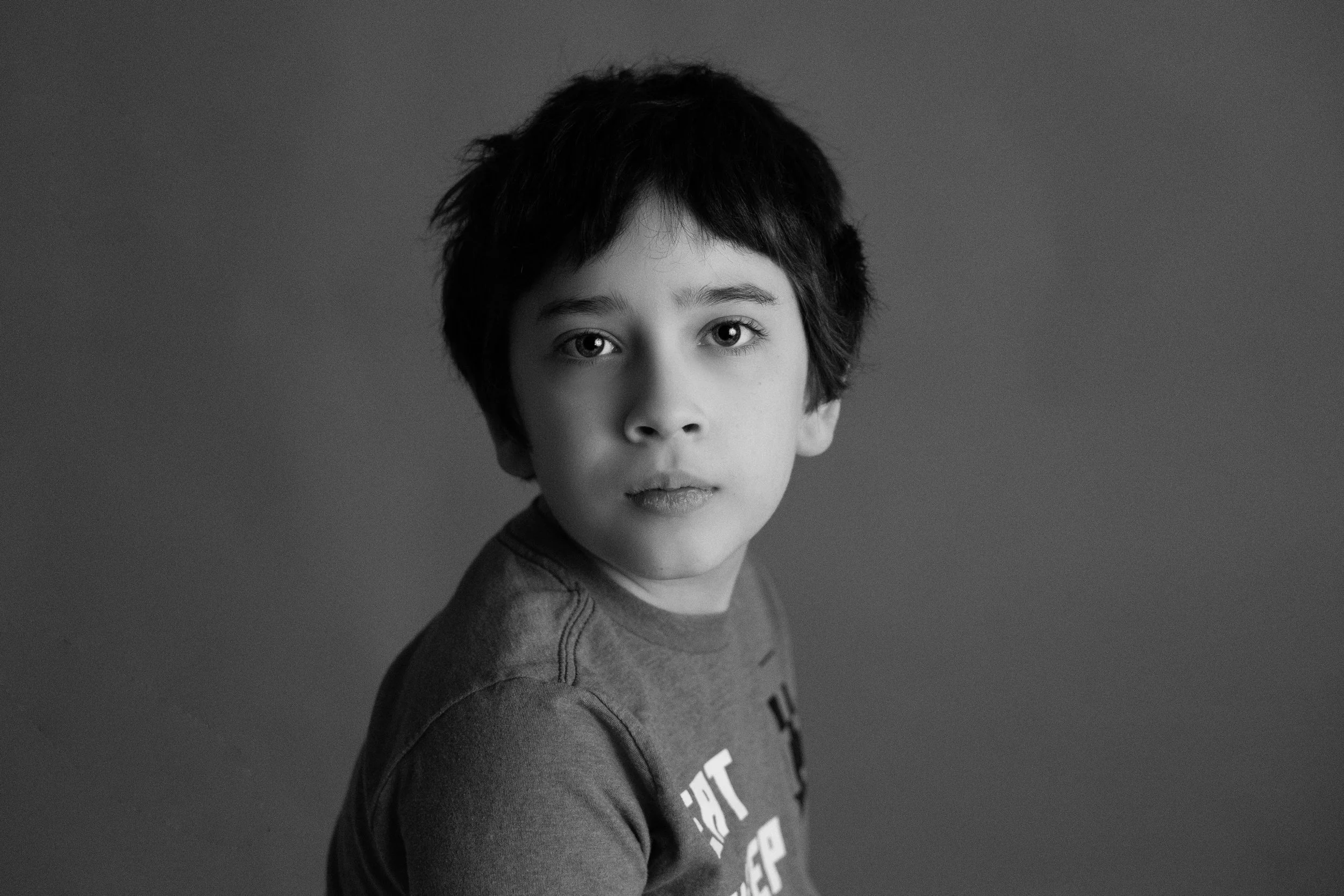Break the Sugar Habit (So You Feel Great—in Photos and in Life)
TL;DR
Want to curb sugar cravings? Simplify your environment, anchor new habits to daily routines, and swap sweet triggers for protein, fiber, and hydration. Start with a 2-week reset (no sugary drinks, planned snacks, early bedtime), then extend to 30–60 days. Use visual cues—like a photo on your fridge or a printed habit tracker—to keep motivation in sight. This isn’t about perfection; it’s about steady, kind progress you can live with (and look fantastic in your portraits).
Gentle note: This is general wellness guidance, not medical advice. If you have diabetes or health conditions, talk with your clinician.
Sugar isn’t evil, but in the U.S. it’s everywhere—drinks, sauces, “healthy” bars, and snack foods engineered to keep you reaching for more. If you’re feeling stuck in a crave-crash cycle, you’re not alone. As a photographer who helps families, seniors, and professionals feel confident in front of the camera, I see how small, sustainable habits—better sleep, smarter snacks, calmer routines—show up in portraits as brighter eyes, smoother energy, and relaxed body language. This guide reframes “quitting sugar” into practical, picture-friendly habits that support your life and your time on camera.
Below: a compassionate (and do-able) plan you can start today—no fads, no guilt, no all-or-nothing thinking.
Why we crave sugar (plain English)
Fast energy: Your brain loves glucose; sweet foods deliver quick fuel (and quick crashes).
Habit loops: You pair “treats” with certain times (coffee break, TV time, stressful emails).
Sleep & stress: Less sleep and more stress hormones amplify cravings.
Environment: If soda and candy are the easiest option, willpower loses to proximity.
Good news: You don’t need perfect willpower. You need better defaults and visible reminders—I’ll show you how.
The Studio Q “Picture Your Habit” framework
We’re going to use images (surprise!) to make your habit visible and real:
Pick one simple goal for 14 days (e.g., “No sugary drinks” or “Protein + fiber breakfast”).
Choose a focus photo (you and your people at your happiest, or a calm place you love). Print it and put it where decisions happen—fridge, pantry, desk—or make it your phone lock screen.
Add a micro-action line under the photo: “Water before coffee,” “Apple + nut butter at 3 pm,” or “Brush teeth after dinner.”
Track checkmarks (paper wins over apps here). Seeing tiny victories adds momentum—this is the “Live Long In Portraits” of habit change.
Step-by-step: a 60-day gentler break from sugar
Think of this as four tidy sprints that build confidence. Keep your focus image up the whole time.
Days 1–7: Reset your surroundings
Sweep the sweets: Move candy, cookies, and sweet drinks out of the easiest reach. You don’t have to trash anything—just increase friction (top shelf, garage cabinet).
Hydrate on autopilot: Fill a big water bottle each morning. Keep it in your line of sight, right where you normally set a snack.
Protein at breakfast: Eggs, Greek yogurt, cottage cheese, tofu scramble, or a protein-forward smoothie. Protein blunts later sugar cravings.
Plan a 3 pm snack: Nuts, jerky, cheese stick, hummus + veggies, or apple + nut butter. Planned snack > chaotic grab.
Sleep is strategy: Aim for your best bedtime. Cravings scream louder when you’re tired.
Tiny script: “I’m experimenting for one week. Not forever—just data.”
Days 8–14: Replace, don’t just remove
Sweet drinks → flavored water or tea. Keep a pitcher with lemon or mint.
Dessert → sweet-adjacent fruit plate. Fresh berries, sliced pears, or frozen cherries feel like dessert without the crash.
Afternoon candy → protein + crunch. Almonds + a few chocolate chips (yes, a few) is better than a candy bar and keeps the “treat” ritual alive.
Stress trigger → motion. 90-second walk, stair loop, or 10 squats. Movement signals “we’re okay,” reducing stress-driven sugar grabs.
Mark your wins under your photo: five checkmarks = a mini reward (a new print for your office?).
Days 15–30: Structure the easy wins
Batch snacks on Sunday: Pre-portion nuts, cut veggies, cheese sticks, or turkey roll-ups.
Eat by plate, not package: Put treats on a small plate, sit, and enjoy. Ends autopilot eating.
Delay & decide: When a sugar urge hits, set a 10-minute timer. Drink water or go outside. If you still want it, choose a smaller, intentional portion.
Upgrade your sweet rituals:
Coffee: reduce syrups; try half-sweet, then quarter-sweet.
Yogurt: choose plain + fruit + cinnamon instead of fruit-on-the-bottom.
Sauces: look for lower-sugar marinara, BBQ, and stir-fry sauces (or make simple versions).
Days 31–60: Personalize and print the progress
Identify your top 2 trigger moments (e.g., post-dinner Netflix; mid-afternoon email stress). Design one ritual per trigger: tea + floss after dinner, 3-minute stretch + protein snack at 3 pm.
Keep real dessert, less often. Planning a lovely scoop of ice cream on Friday beats nightly mystery snacks.
Print your proof: Pick a photo of you doing something that feels good (walking at Felida Overlook, laughing with your kid). Frame it in a float frame where you usually reach for sweets. That visual cue says, “I’m the person who takes care of me.”
Snack list that actually helps (simple + portable)
Protein-forward: hard-boiled eggs, jerky, cottage cheese cups, Greek yogurt (plain + fruit), cheese + whole-grain crackers, tofu cubes.
Fiber + crunch: carrots, snap peas, cucumbers, bell peppers, roasted chickpeas, popcorn (lightly salted).
Fruits that satisfy: berries, pears, apples, cherries, citrus.
Honest treats: a square or two of dark chocolate, dates with almond butter—on a plate, slowly.
Pro tip: Keep “emergency snacks” in your car camera bag or purse. Chaos calories happen when we’re unprepared.
Mindset shifts (because willpower gets tired)
Not “I can’t”—“I’m choosing.” Language changes identity.
Perfection is boring. Aim for 80/20 consistency; your body notices.
Urges are waves. They peak and pass—if you pause and pivot, you win.
Environment beats motivation. If cookies are on the counter, you’ll eat cookies. Move them; keep fruit at eye level.
Use your images as anchors (the Studio Q touch)
Fridge frame: A small matted print of your family where you prep food. Every glance whispers why you’re changing.
Entryway float frame: A confident portrait by the door next to your sneakers—energy cue before a walk.
Desk triptych: Three 5×7 prints: why (family), how (walking trail), you (portrait). These visual cues beat any app reminder because they live in your daily path.
How this shows up in photos (and life)
Clients often tell me that after a few weeks of steadier routines—more water, better snacks, a bit more sleep—they feel calmer, clear-eyed, and present in their sessions. That presence photographs beautifully: relaxed shoulders, brighter skin tones, easy smiles. Sugar freedom isn’t a weight thing; it’s an energy and confidence thing. And it makes the experience of being photographed so much nicer.
Troubleshooting (when cravings roar)
Did you eat enough? Add protein + fiber at your last meal.
Are you dehydrated? Thirst can masquerade as sugar hunger.
Are you underslept or stressed? Take a 10-minute reset walk, drink water, and see how you feel.
Is it a ritual? Keep the ritual, swap the content (tea instead of soda; fruit + yogurt instead of nightly cookies).
All-or-nothing spiral? If you had the cupcake, enjoy it. Next choice = fresh start. No drama.
14-Day Quickstart (copy/paste)
Put this under your focus photo. Check a box each day.
Daily:
□ Water before coffee
□ Protein breakfast
□ 3 pm planned snack
□ 10-minute walk or stretch
□ Phones out of the bedroom (or Do Not Disturb)
Extras (pick two):
□ No sugary drinks
□ Half-sweet coffee
□ Fruit for dessert on weekdays
□ Asleep by your best bedtime
At the end of 14 days, pick one habit to keep, one to experiment with, and print a tiny 4×6 “progress” photo for your desk.
Frequently Asked Questions
How long does it take to stop craving sugar?
Many people feel steadier after 10–14 days without sugary drinks and with better sleep. For deeper habit change, 30–60 days builds new defaults.
Can I use sugar substitutes?
You can, but consider a reset period with fewer sweet tastes overall. Substitutes can keep the “sweetness habit” alive. If you use them, taper to smaller amounts.
Do I have to cut sugar completely?
No. The goal is choice, not restriction. Planned, enjoyable treats beat daily, mindless ones.
What should I eat before a photo session to avoid a crash?
About 60–90 minutes before: protein + complex carbs (Greek yogurt + berries; turkey + cheese roll-up + apple; hummus + whole-grain crackers). Bring water and a tidy snack for kids.
How do I handle social events?
Decide ahead: “I’ll enjoy one dessert and skip sugary drinks,” or “I’ll savor two bites and move on.” Plate it, sit, enjoy—no grazing by the dessert table.
Will this help my skin or energy for photos?
Often yes—more water, steadier meals, and better sleep show up as brighter eyes and calmer skin tone. Everyone’s different; the process itself is the win.
Final pep talk
You don’t need a cleanse or a new personality. You need a few visible cues and kinder defaults. Put your why in a frame, keep water and protein within reach, and build tiny rituals around the moments that trip you up. Two weeks from now, you’ll feel it. Two months from now, you’ll live it—and it’ll shine through when you step in front of my camera. When you’re ready, I’ll help you celebrate with portraits that remind you who you’re becoming—and help your good habits Live Long In Portraits.




